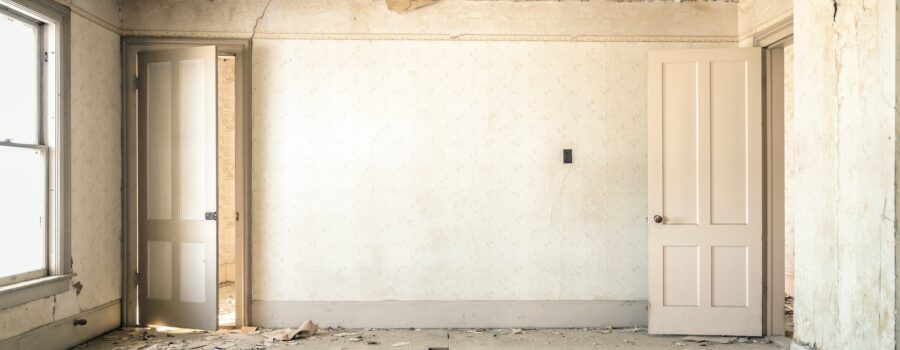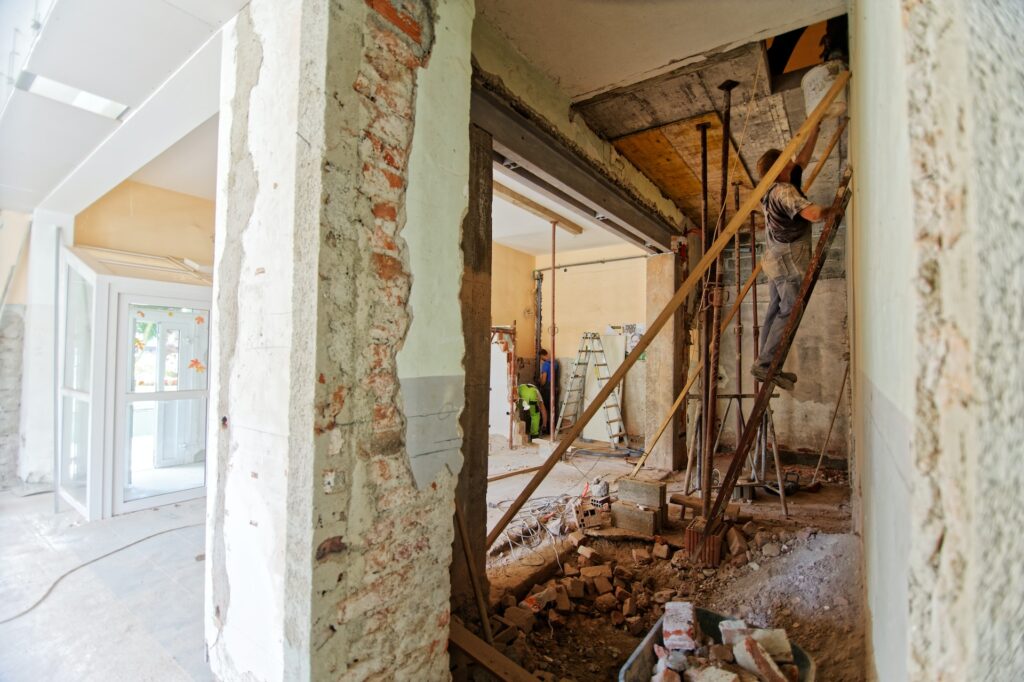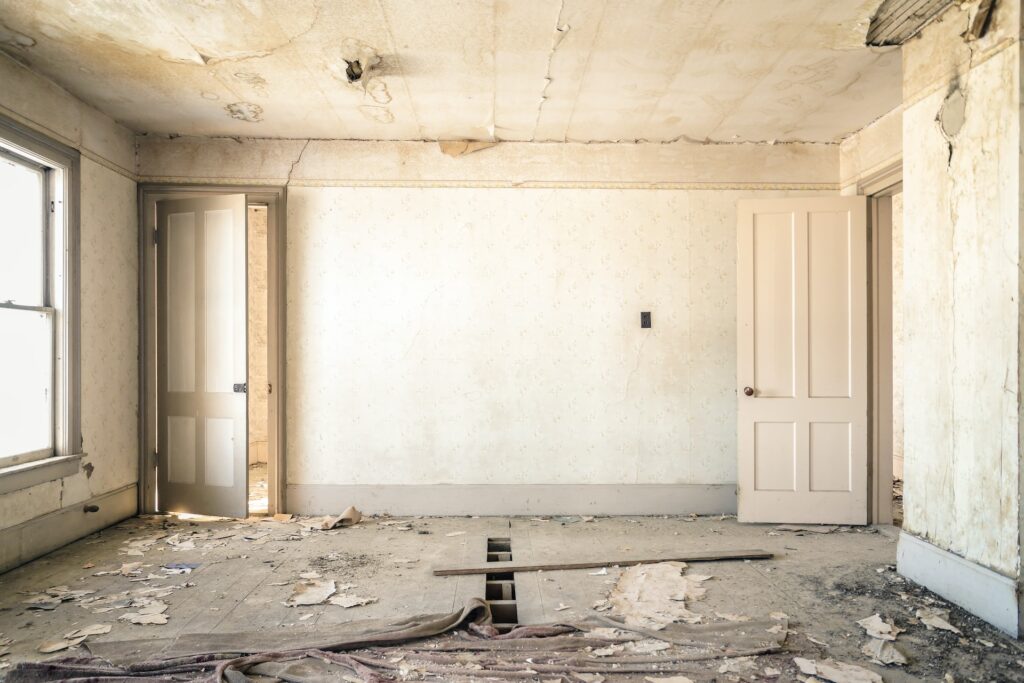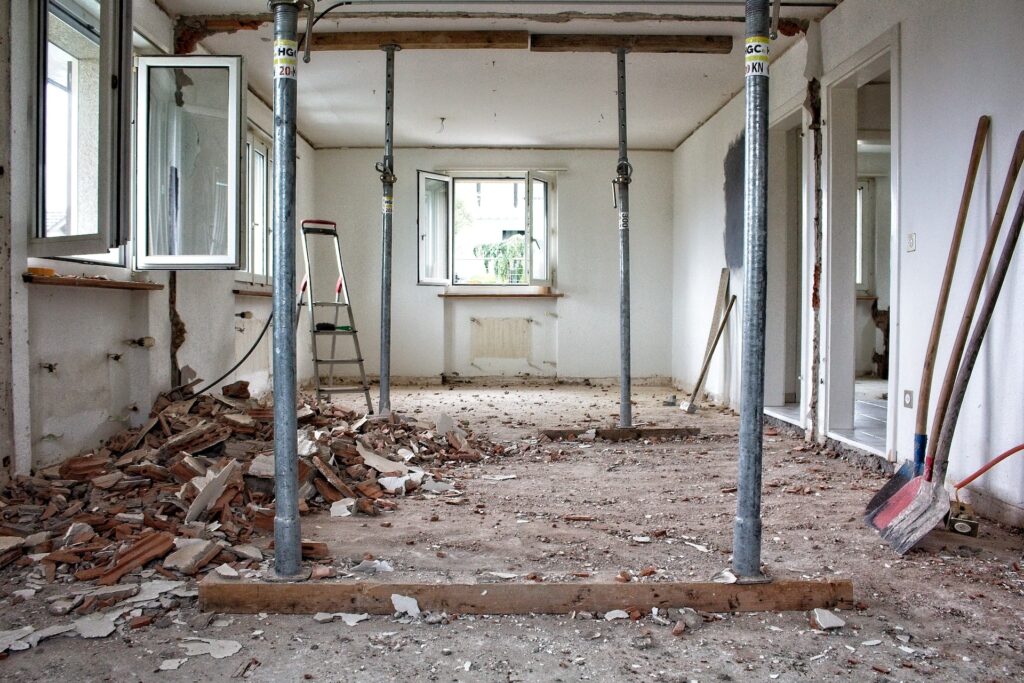
Understanding Ceiling Cracks and the Importance of Proper Ceiling Inspection
Ceiling cracks can form for many reasons, from hairline cracks to discolored areas that indicate moisture damage. While minor cracks need not concern you, some suggest that more extensive repairs may be required if they aren’t immediately fixed.
Each type of ceiling crack differs in terms of the cause of the issue and how severe the damage is. Understanding the different types of ceiling cracks will help you know when repairs are required. This guide will explain the kinds of cracks and why proper ceiling inspections are essential.

Types of Ceiling Cracks
Numerous types of cracks can develop in your ceiling. Differentiating between them should make it easier for you to determine the cause. The two primary causes of these cracks include the typical settling that occurs when a building ages and structural damage. Cracks can also form because of low-quality craftsmanship.
The tiniest cracks in a ceiling are hairline ones, less than 1/16 inch in width. While hairline cracks may not be aesthetically pleasing, they shouldn’t be a problem. They are often caused by plaster expanding and shrinking due to varying humidity levels. Paint buildup might also be the reason that these cracks have developed.
During an inspection, you might notice a crack in ceiling drywall. This type of crack is harmless mainly because it’s caused by the drywall tape becoming loose. During the construction process, tape is used to seal any straight edges where pieces of drywall meet. If only a small amount of drywall mud is placed in the area to seal the tape, there’s a good chance that the drywall tape will pull away.
One type of ceiling crack that may be a problem is a discolored one. If you spot a discolored crack in your ceiling, it’s likely caused by water damage. Something in the vicinity may be leaking. If you know that a pipe is nearby, it could be the cause of the discoloration. Before you fix the crack, identify and repair the source of the leak.
If large cracks have formed around the center of your ceiling, you’ll notice structural damage. These cracks may be accompanied by sagging. Substantial water damage, foundation settlement, or a heavy item can cause this issue.
If a crack starts at the ceiling and continues down the wall, this is another indicator of structural damage. When a crack develops where the ceiling meets the wall, the building’s foundation has moved, which may result from structural damage.

Factors Leading to Ceiling Cracks
Numerous factors make ceiling cracks more likely, including age and poor construction. If the drywall isn’t installed correctly, cracks may develop in the ceiling. However, reapplying tape and drywall mud can quickly repair this issue.
Your home may also be getting older. Even if you properly maintain the structure, general wear and tear will still occur. For example, foundation settling takes place as the building ages. Along with cracks in the ceiling, you might also notice floor and wall cracks that need to be tended to.
As mentioned earlier, a primary cause of these cracks is moisture damage. If a significant thunderstorm recently rolled through your neighborhood, look for signs of discoloration on your ceiling. If you first notice this discoloration in the days immediately after a thunderstorm, there may be a crack in your roof that’s leaking. If there’s a floor above the ceiling, the leaking could be coming from that area instead of the roof. The leak may be the result of cracked plumbing as well.
The drywall could be wrong if larger cracks appear in your ceiling. When drywall isn’t installed correctly, it’s more likely to crack. However, this issue is relatively easy to fix. When drywall joints are improperly taped, cracks can occur. You can repair this issue by adding more drywall, mud, and tape.
Cracks can also be caused by the floor above the ceiling being too heavy. If you have a hefty item above the impacted area, it’s likely the reason for the cracking issues. You may also discover that the ceiling is sagging. If a bathroom is above the portion of the ceiling that’s cracked, a heavy bathtub might be the cause.
The source of the cracks in your ceiling could also be foundation problems. Foundation settlement often puts strain on the building’s frame, causing cracks. The damage to your foundation can worsen, so detecting and repairing this issue early on is essential.

Importance of Permit Expediting in Ceiling Construction
When constructing a new ceiling or performing complex repairs, you must first obtain a permit. In this situation, expediting the process is highly recommended. Getting the necessary permits for ceiling construction can take weeks or months. Getting approval significantly faster by seeking assistance from a company offering permit expediting services can help.
Building permits for ceiling construction are necessary to ensure structural integrity. By obtaining a permit before construction, you can be confident that the project plans are up to code. If a construction project doesn’t adhere to local building codes, the value of the building could drop.
Selling the property is also easier when you follow building codes and regulations. When listing a building, all repairs and improvements must be disclosed. When making these disclosures, you must also inform the buyer if the necessary inspections and permits were obtained before work began. Lenders usually only provide financing if proof of an inspection is given. If you perform building modifications without having a permit, you may be forced to do expensive repairs before you can finalize the sale.
Having the proper construction permits for the project at hand is directly tied to preventing cracks from developing in the ceiling. With a construction permit, the work may be manageable, which is one of the leading causes of these cracks.
The Role of Inspection in Identifying and Addressing Ceiling Cracks
When you notice cracks in your ceiling, this doesn’t mean that you’ll need to make expensive repairs to fix the problem. However, early detection and repairs are required to minimize costs. Regular ceiling inspections allow for early detection. Hire a professional inspector for a thorough assessment. In the meantime, there are some signs you can look for that indicate the need for immediate action.
Knowing what to look for in a ceiling crack can help determine whether it’s a cosmetic problem or a more severe issue. Several factors dictate the severity of a crack, including its size, cause, and location. If the problem is more serious, it should be addressed by a professional.
Have you noticed a long, continuous crack that runs from your ceiling and down the wall? If so, only a foundation professional can repair this, which might be a structural problem. If the ceiling crack is accompanied by sagging, the issue may result from water damage, which requires a professional. The primary signs of structural damage that you should be on the lookout for include the following:
- Bowed or cracked walls
- Windows or doors that stick
- Uneven floors that sag or slope
- Cracked moldings
- Wall rotation that’s caused by too much moisture around the foundation
- Floor cracks that impact more than one tile
- Step cracks in masonry or bricks
- Water damage in your basement, which cracks in the foundation wall, may cause
- Walls that have separated from the ceiling
- Chimneys or porches that have separated from the rest of the building
If you detect any of these problems, ask yourself if there have been any recent sinkholes or earthquakes in your area. When the land surrounding a building shifts, structural damage is more likely.

Conclusion
Ceiling cracks are common occurrences that result from poor construction work or problems within the foundation. If you detect hairline cracks or thin spaces in the ceiling drywall, immediate repairs may not be necessary. Larger ceiling cracks, however, need to be addressed promptly to avoid additional damage and costlier repairs.
With permit expediting, structural integrity in ceiling construction can be more effectively maintained. Because it is essential to repair serious cracks as soon as possible, you shouldn’t have to wait weeks or longer for a permit to be approved. Permit expediting allows you to bypass this problem altogether.

Jason Somers, President & Founder of Crest Real Estate
With over 15 years of professional experience in the Los Angeles luxury real estate market, Jason Somers has the background, judgement and track record to provide an unparalleled level of real estate services. His widespread knowledge helps clients identify and acquire income producing properties and value-ad development opportunities.
Learn more about Jason Somers or contact us.



